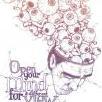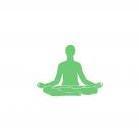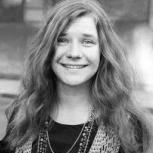Search the Community
Showing results for 'Nonduality'.
Found 4,184 results
-

egoless replied to egoless's topic in Spirituality, Consciousness, Awakening, Mysticism, Meditation, God
Why does it matter what do I think about these? As I’ve said sin is just a choice to be away from the God. We should battle sin in us not the person himself. Noone is sinless except the god himself and he was crucified to forgive our sins. All that is “required” from you is to seek and praise the god. But even that is your choice. God does not force anyone to make a choice like there is in nondual understanding. In the nonduality there is no choice, there is no personality you literally become dead. Go that route if you really want to... I have been there and I don’t recommend it as it is delusion. -
of course, Leo should look beyond his own interpretations of his experience, and beyond infinity infinity has no absolute, and has no ground. groundless and empty as Leo says. while true ground of all, true absolute, actual God of monotheism, Allah/Elohim/Christian God, True God transcends infinity itself thats the biggest mind twist, especially for nonduality folks and alive infinite intelligence that Leo tripped to, is not really a God of monotheism it is what Sufis call as Universal Being, or Universal Soul, or Self-unfolding Being or just big SELF also known as Adam Kadmon in Kabbala think about it, you just trip and arrive to godhead, who is actually just a bored intelligence with human qualities and its not even clear whether he is alive or dead. whether you can call him god or just a dead reality what kind of god is this? god with existential boredom? nothingness whatsoever? empty awareness field? infinite machine of infinite possibilities? is it god or is it some mechanic calculator? can you intuit that there are inconsistencies here brahman = atman. but brahman is not God that transcends infinity. brahman is the name for impersonal aspect of this reality, which is maybe dead maybe alive, maybe dream maybe real, maybe this maybe that, utter nonduality however pretty nondual picture only applies to this reality, but it fails when you recognise that your witnessing of the here and now, is not simply equal to reality but its rather pointing to absence of the real subject in the reality, it points to absence of actually real thing in this infinite reality. coz actually real and true is beyond this infinity. absolute truth is not infinity, or being, absolute truth totally transcends infinity, and you can't trip to it, in other words creator and creation are not in nondual bowl, they are not the same thing. absence of the real subject in this reality points to that real subject does not exist in this infinite reality, real subject transcends infinity so its not true to equate all old gods into the same god, all religions into all being about same thing, archaic paradigms of pantheism and monism to monotheism based on revelations, all mystical schools into the same thing, all notions into one undifferentiated bowl of oneness, and think that this undifferentiated bowl of maybe alive maybe dead reality is the absolute truth that people pray to? and consider as holy? praying to dead consciousness? to infinite machine with existential boredom? can you see that its not so simple my friends. but in the same time its all much more simple than we think it is, and 'deluded' religions who followed prophetic revelations understood it much better than us modern-time sages, not just conceptually but also experientially, because only messengers who had message from Absolute Truth could taught you how do you form relationship, binding (religare) with Absolute Truth, God. and your reliance upon your own techniques or own understanding can only take you to merging with brahman. do you really think that Jesus or Muhammad did what they did just so you can merge with dead brahman intuition can sense things that actual direct experience cannot. actually, intuition is more real than experience, or than perception. and ur intuition probably sense that something isn't correct about this, and your experience of god might probably been tricking your understanding of the map of the territory human-being is reflection or projection of this universal being (Adam kadmon), its an archetype of reality, thats why you are one with it, thats why Leo sense that he is it, and it is him. of course reality is infinite mirrors all referring to each other, thats why its all relative, because absolute is simply not in this reality true God is witness of this reality/infinity, but his essence is not here, he is not 'what is', his essence transcends 'what is'. God is what isn't, his absence in this reality actually points to him existing outside of this reality, when mystics say God is everything they confuse realisation of him witnessing everything with his actual essence being in everything, but we can't say that his essence is in this reality, coz its totally different from this infinite reality, Sufism had this debates between various schools and resolved this misunderstanding long time ago, Sufism has term called 'monotheism of witness', which means that being is all one, while Allah is witness of being, and actual essence of God transcends being our infinity and this infinite intelligence is probably like a tiny toy in his 'hands' maybe this whole thing of misunderstanding god is the obstacle towards your enlightenment. so Leo, I believe in you but I carefully follow Leo's growth, and it is very interesting to watch, because he brings lots of interesting stuff, even if I don't agree with him about God. coz without Leo i would still be studying all the things like nonduality that he studied for us, so without Leo i wouldn't come even close to anything, but now i wish to repay Leo, so that this maybe will boost his progress. he is great in investigating reality, but i hope there will be time when he will start to investigate about what can be outside of 'all there is'
-

Dino D replied to egoless's topic in Spirituality, Consciousness, Awakening, Mysticism, Meditation, God
I think it does not matter if egolea has found the real truth or experiencing a crazy ego backlash... he ist an old fellow, very experiences, smart and very valuable... why? If its ego backlash we can observe it and learn from the mistake, if there is something more in Jesus and.maybe something more to nonduality or something wrong we can work on this to... however i need to.tell younguys to accept egoless no.matter if he is totaly wrong and of the road or not... we have to stay totaly open, and openminded and observe his road... egoless, it is possible that youre now a little bit to much excited about your experience or Jesus influence... i think evan the bible has verses where it says d9nt preach on placea where youre not heard... come a bit down, relax, you dont need to prove christianity on this forum.at all causes and today, take it a bit slowely, conteplate it, go deeper to Jesus and still dont impose that hard what you think or belive right now... with much love to everyone, dont forget to stay friend and openminded to everything -

egoless replied to egoless's topic in Spirituality, Consciousness, Awakening, Mysticism, Meditation, God
It is true for me I can’t speak for everybody. But I know that it is the ultimate Truth just as some of you think the nonduality is the Truth. Have been there. It is self deception. -

egoless replied to egoless's topic in Spirituality, Consciousness, Awakening, Mysticism, Meditation, God
@blazed I have been stuck in your paradigm and I know your perspective. You don’t know mine though because you did not search for personal God. Such a huge shift between my perspectives would have been impossible without personal God. I was very hardcore into nonduality. You can watch other christian Testimonies as well if you are really curious on Youtube. -

Nahm replied to egoless's topic in Spirituality, Consciousness, Awakening, Mysticism, Meditation, God
Like you might look at a photograph momentarily, and then resume your life, you’re looking at a life, shortly to resume your infinitude, which reveals you are the photograph and the life, and therefore neither ever were. It’s not that you forget the photograph, it’s that it never was. Yet, the photograph is the point of focus, when not being “photo’s”, you’re doing nothing - Being. We call this “life” & “death”. There’s the one, only from the other. Alive & dead are duality (ignorance). What is ignorant - Nothing is, on purpose. The obvious nature of Being, is to be, just being - being you. Nonduality is not paradigm, it’s Truth. Paradigms are made of thought (ignorance), a means to live the photos. The conceptualization of nonduality is duality because there is a false “conceiver” or “conceptualizer” at play, - it’s just a thought about nonduality, which perpetuates a false “thinker”. To prevent realization of nonduality, one has only to imagine “other”, even if that other is Jesus, or God - that is still nonacceptance of self, it’s still “twoness”, duality within. Taking the photos / lives seriously, is the funniest thing. What am I? Holy shit! I’m that! What is that doing? That is being the guy who says “What am I again?” Oh yeah, holy shit, I’m that! What’s that doing again? Oh yeah, this! Me! You can be anything. You can even be what wonders what you’re being. If it wasn’t amazing it’d be ordinary, and if it wasn’t ordinary it’d be amazing. But it’s just nondual. -

egoless replied to egoless's topic in Spirituality, Consciousness, Awakening, Mysticism, Meditation, God
I say neither of those. Not anymore when my eyes are open to the Truth of Jesus. I also see how deluded I was and am trying to help those who are lost and in need of escaping the nonduality black hole. -

egoless replied to egoless's topic in Spirituality, Consciousness, Awakening, Mysticism, Meditation, God
@blazed the biggest delusion of nonduality is the determinism and no free will. God has designed you in a way that you create and choose like he does. Therefore you are not God. You are creation of the God with love and intelligence. Jesus is the personal God. And yes I am born again christian. But I see lots of similarities between nonduality as it was my previous perspective. However there are some major delusions in nonduality as well. I am trying to raise awareness of these delusions and one among them is the ability to become god. That’s the biggest delusion. -
God is infinite intelligence. God is personal. God has intelligently designed you. But when you say: “I am God” that’s ego’s desire to be special and godly. This is where the delusions of nonduality starts. God is you but you are not the God and this is the biggest paradox. You can never become the God. You can only be united with god after you leave the form. God is personal. He is alive. He has a plan for you and everything. He is infinitely intelligent. God thinks the reality into existence. God has created you with infinite potential and therefore free to choose. Free will is the foundation of your existence.
-

Dino D replied to egoless's topic in Spirituality, Consciousness, Awakening, Mysticism, Meditation, God
@Rilles youre unhappy ?and you didnt make it, ?not one nondualist here did ,,make it"... its an infinite proces of growrh and work that never brings liberation or happines... but its personal development that gives us benefits... that what egoless claims that he has found is the goal of all of us... but i dont see it happening with nonduality... we just get more advanced in understanding our sufferung and getting wise and mindfull, some of us are getting more understanding, lovely, calm but not trully liberated, happy and fullfiled... it seams that egoless does, that the ,,Jesus path" can give you that... but maybe thats also a fanatic delusion and a kind of ,,triping" and blind beliving with strong pshylogical effects...soo egoless and his ego and person are not that much relevant as pure facts are... you follow nonduality and get into an infinite never ending and never arriving work of nothing (devils deception????) You follow Jesus and this is it... simply... we have to see it 4 our selfs... I have to, i dont know but im very much affected from those ,,new age (and nonduality) to christanity testiminials" like egoless has... sound kind of a truth... -

egoless replied to egoless's topic in Spirituality, Consciousness, Awakening, Mysticism, Meditation, God
Your questions lack the understanding of who Jesus is. You lack the understanding what it means that the god himself came into human being and was crucified for our sins. Human nature is sinful and Jesus is the savior of all of us. Losing Jesus is your choice. Jesus doesn’t punish anyone. It’s always your choice wether you live with or without the love of God. You are calling me a wall and expect me to answer your questions which I still did by the way. If Following nonduality made you such a disrespectful person towards human life maybe it’s time to challenge your worldview? P.S. As I have told you many times I have seen the both perspectives and I was in deep nondual practices. The Truth has been revealed to me after I made the first step towards Jesus. -

Leo Gura replied to abfd's topic in Spirituality, Consciousness, Awakening, Mysticism, Meditation, God
Saying "Reality is virtual" is identical to saying "Reality is Nothing" or "Reality is an illusion" or "Reality is a hallucination" or "Reality is consciousness". Although I don't think Campbell actually realizes that it's not only virtual, but also infinite, and that time is NOT fundamental. I don't consider Campbell enlightened. Although his teachings are quite good. He's missing the final crowning insight of nonduality. -

egoless replied to egoless's topic in Spirituality, Consciousness, Awakening, Mysticism, Meditation, God
@Dino D forget the nonduality and follow what your heart says to you. Try at least for a month. -

Faceless replied to egoless's topic in Spirituality, Consciousness, Awakening, Mysticism, Meditation, God
One who is empty doesn’t defend. I am not a nondualist. I am nothing. Nothing does not identify. I am not defending Nonduality, Christianity, as only an entity who identifies participates in such dualistic action. Truth can not be seeked. To seek truth is to push truth away. -

egoless replied to egoless's topic in Spirituality, Consciousness, Awakening, Mysticism, Meditation, God
Because I felt the existence of the God and it was something other than me. It was not me and it was apparent. It was incomparably more profound than all of my nonduality. And it only took minutes not 30 years of self hypnosis -
while watching leo's part 2 of his retreat, he mentioned the absolute nonduality/singularity experience, and suddenly it clicked for me, i became conscious that everything is utterly meaningless. this is different from knowing intellectually that everything is meaningless, which i knew so far. I felt fear engulfing me a little, my heart beating, a lot of stuff from my life situation came to mind and i realized its utterly meaningless. I felt like I was losing control a little, but i surrendered to all the fear, let it go and it kinda passed. it was a fun experience in retrospect (i actually enjoyed the fear a little, masochistically lol, made me feel alive) and a bit of an insightful one, because I saw another example of the difference between knowing something intellectually and really getting it. I feel like maybe the effects of the kriya yoga are coming into play. ive been doing it for 2 months now, and sometimes I feel like everything is very still, and I feel kind of soft and flowing sensations in the back of my head that come with that stillness. I have an intuition that it makes me become more aware of my thoughts, emotions and feelings, and is making me able to "manipulate" consciousness in a subtle way (dunno how to explain it). I think that contributed to that realization.
-

Dino D replied to egoless's topic in Spirituality, Consciousness, Awakening, Mysticism, Meditation, God
I have also big doubts about everything and also about the nonduality... So Rupert Spira is wrong? and he (among other great non dualist) is leading us the wrong way, probbably to unhappines or what? i listened to Steven Bancarz and I spot many ego and fake things about him, he is an attention whore and deluded (its not all that he is, i see also beuty in his life but this deluded part I see also)... however he does not matter... my question is, what is your gide now? what would you advice me, and how did you found Jesus, what happend exactly?? -

egoless replied to egoless's topic in Spirituality, Consciousness, Awakening, Mysticism, Meditation, God
Good luck in your search to all of you. I shared the different viewpoint, the different perspective. Now it’s up to you to decide how attached you are to the nondual ideas. Most of you here know me and know that I was deeply practicing nonduality and that I am not speaking out of thin air. -

Faceless replied to MarkusSweden's topic in Spirituality, Consciousness, Awakening, Mysticism, Meditation, God
I have never accumulated a single non-dual teaching. What traditions point to is not what nonduality is anyway. I simply learned about all dualistic movement in myself and ended it. As I have said before duality must end. There is no way around that. -
You’re more aware now of the ego’s shenanigans like thinking about how everyone else feels - instead of continuing to realize the truth within you. Being aware is plenty. It weeds it out. Thoughts bubble up and just start mixin right in with all the others -so nip thoughts at the root, be aware there. If the end to suffering, enlightenment, and realization of nonduality are on the path... then thoughts about everyone else would be a magnicficent yet formidable trap, as it would generate much thinking, aimed without. You don’t have to say as much as it seems you think you should, that’s just the nature of the over thinking. It’s nothing, thoughts hold no power. You are the power. Or get a job as a dancer and bank off this...hidden people pleasing talent? You know I wish the best for you either way. ? Ideally we’d change everything about ourselves, our perspectives and our circumstances, just for the frame of reference in experience - the wiggling loose of the mind - and you’re aware there’s a hidden gift in every circumstance.
-

Nahm replied to Torkys's topic in Spirituality, Consciousness, Awakening, Mysticism, Meditation, God
You’re already God, it’s the falsities that need surrendering, and the idea of “I” “me” (what @Faceless helps us zero in on ??) Not sure if you’ve heard what he’s saying yet. I didn’t post much at all for maybe 4-5 days a while back, because I did not understand him. I didn’t recall ever just flat out not understanding what someone was saying, and it bothered “me”. I read his posts many times and contemplated. When I did understand, I cried in pure joy for 2 days. Dropped a 50 pound mental weight - Lifesized relief. In hindsight, I think I skipped a no self stage of realization altogether on the path, through practices & psychadelics, experienced Being. But then “Integration” & “Embodiment” were a “problem”, because there was a concept of a me (self) as a filter, thus perpetually chasing such experiences. I had no awareness of the degree I was fooling my ‘self’. Hopefully that’s useful. There’s no Godly lifestyle, this “you” (idea) is judging this “you” idea, resulting in doubly overthinking, imo, leading to the numbness & resistance experienced when that idea of you gets what ‘it’ wants (vg’s, etc). When it get’s what it wants, that’s conditioning and it feels like poop. Could be a desire to be accepted & approved of, which reinforces “other”, which comes back to reinforce a false ‘self’, seperate from ‘other’. Contemplating & realizing could ‘break’ the loop, good ol’ fashioned sitting through it, doing nothing, ideally in nature. Years ago, I was on COD (Der Reise) nightly till 1am, eating crap, then sleeping poorly, thinking poorly, etc. A shroom trip introduction of nonduality (on a foundation), and I just haven’t been interested in picking it up since. Not sure if that’s helpful, hope so. Consider not referring to those hobbies as distractions. Rather, realize you are already doing exactly what you want. If that doesn’t feel good, a deeper realization of what you actually want to be doing is already on it’s way. ”Get rewarded for mastery”... The choice to love yourself is the reward. There is no future reward. Alignment. To care for The Temple is the greatest “reward” because it’s inherent love. It’s connection by default. Simply remembering what you are. Uncertainty which allows choice, is the greatest gift in the universe. Yes choice is an illusion, but the entire life is an illusion. You have that gift. You are that gift. A dream gift is great for a dream life. Whatever you want to call this, in which you can do that, is The Present, the gift. How precious is it? How precious is Life? Healthy activities - start small & easy. Subscribe to a health magazine. It’ll come every month, easy automatic inherent accountability / reminder, and it primes your environment if you leave them lying around. Subscribe to health oriented youtube channels, and daily and weekly emails from teachers of health and well being. Put posters and diagrams of healthy food in your kitchen. Someday, before you’ve eaten anything, put an orange in front of you, for an hour. Then eat it slowly and deliberately. You might remember how delicious nature & well being are. There is a direction of causation (albeit illusory).... Being...aware...thinking...sensing. Look at this in the reverse direction and the ridiculousness is apparent...you can’t visually see thinking, you can’t think awareness, and you can’t aware being. That’s just silly. So in contemplation, use this ‘direction’ to see where you’re unaligned. I really rambled on here, if not useful print it and use it for toilet paper. Godspeed! (Slow af) -

MarkusSweden replied to MarkusSweden's topic in Spirituality, Consciousness, Awakening, Mysticism, Meditation, God
@Saumaya You should go see what @Mikael89 wrote. Nonduality is radical in comparison with your societal brainwash, I know the friction you facing. But there are no shortcuts to enlightenment, you must go through closed doors so to speak and that hurts. I pointed out the time aspect in case of newbies read this thread, because on a surface level it look like my OP question implies time, which it doesn't an cetus, Nahm, Faceless etcetera know this, but others might not. This thread isn't about time, start a new thread if you like to discuss that. This thread is about how humans fail to use her brain in the right way that was given by God, and as a result God will wipe us out of the picture. (And yes, I know God is everything, even the humans, read between the lines) -

InfinitePotential replied to Faceless's topic in Spirituality, Consciousness, Awakening, Mysticism, Meditation, God
True nonduality involves no time, no past associations, no perception, no experience. At the highest levels of enlightenment (from what I've heard), one can choose to partake in the dance of duality / time and tie their shoes, seeing the shoes as they are Now, completely present... or one can rest as The Absolute, which is beyond experience and incapable of being described. Awareness is limited. It has to exist and be aware. Your ultimate nature is beyond description, cannot be experience, described, intuited, etc. You can only let go of all identification (even open empty presence awareness), and drop all effort entirely, and be it. There is more to enlightenment than realizing you are aware of your bodymind, and not the bodymind itself... Where did the awareness come from? -

moon777light replied to Ether's topic in Spirituality, Consciousness, Awakening, Mysticism, Meditation, God
@Arman i completely agree with you. i think a reason why me (and practically everyone on here) quite like Leo's approach to explaining this is because he does it in a non-bullshit, straight to the point, open to skeptism way. I noticed Faceless's way of explaining the concept of nonduality is through the use of something similar to riddles. However i dont think his points are wrong or anything, just that sometimes ( a lot of the times) when i dont understand, i feel like im dumb or inadequate to understand this lesson thats being presented to me. Sometimes i get frustrated when i ask him to elaborate but he doesnt answer the question directly, instead answers by the use of other riddles. Then again there is a great deal of myself projecting onto faceless's answers (my insecurity leading me to believe that im dumb since i dont understand or my somewhat lacking of self-worth jumping to conclusions that he is speaking is a condescending-im-more-spiritual-than-you kinda way). We are all here to learn. Peace Also just wondering @Mikael89 @Faceless @Outer @Anna1 have any of you actually experienced no-self, or "enlightenment". Not talking about the philosophical questioning that all is one, but actually feeling it, the infinite? -
@Ether “Old boy” was the experiencer of nonduality. A concept of an individual. The character in time who convinced the audience it’s the actor. The filter of the present. The unseeable haze. The firmament to clarity. The lynch pin of the gateless gate. The ‘protector’ of actual reality. The invisible shield of fear. The offended, perturbed, and engaged when addressed as - my friend, buddy, and ‘old boy’. The seer of other and therefore, other. The owner of memories and desires. Old boy was a selfless half dead workhorse still running in it’s mind even as it was being put down, and of course, freed.

